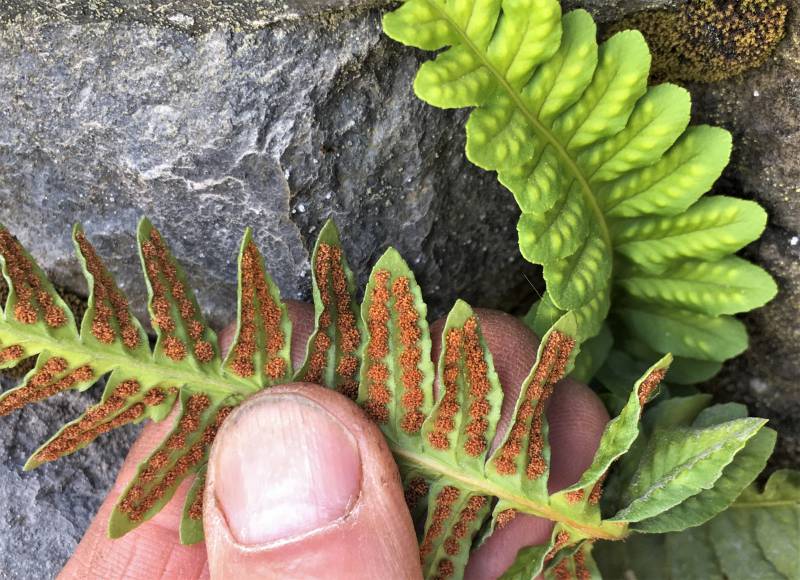Hosted by the University of Washington Herbarium, Burke Museum
Publication: Proc. Biol. Soc. Wash. 13: 200. 1900.
Origin: Native
Herbarium search: CPNWH
Notes: FNA2: "Using morphologic and chromosomal data, F. A. Lang (1971) proposed that Polypodium hesperium originated through allotetraploidy involving P . glycyrrhiza and P . amorphum , a hypothesis recently supported by electrophoretic studies (C. H. Haufler, M. D. Windham, and E. W. Rabe, unpublished). Variations in spore surface morphology and banding patterns observed in isozyme studies indicate that P . hesperium may have originated more than once from different individuals of the same species. Some collections of P . hesperium can be mistaken for P . glycyrrhiza , but the latter species is easily distinguished by its pubescent rachises, linear blade scales, and smaller spores (less than 58 µm). Although P . amorphum has sporangiasters and P . hesperium lacks them, misshapen sporangia in P . hesperium can mimic these distinctive soral structures. Therefore, it is often necessary to use a combination of soral, stem scale, and blade scale features (discussed in the key) to separate P . hesperium from P . amorphum . Hybridization occurs between P . hesperium and each of its progenitor diploids to form triploid individuals with misshapen spores (F. A. Lang 1971). Rare, sterile, tetraploid hybrids with P . saximontanum have also been detected (M. D. Windham, unpublished)."
Last updated 8/31/2023 by David Giblin.

